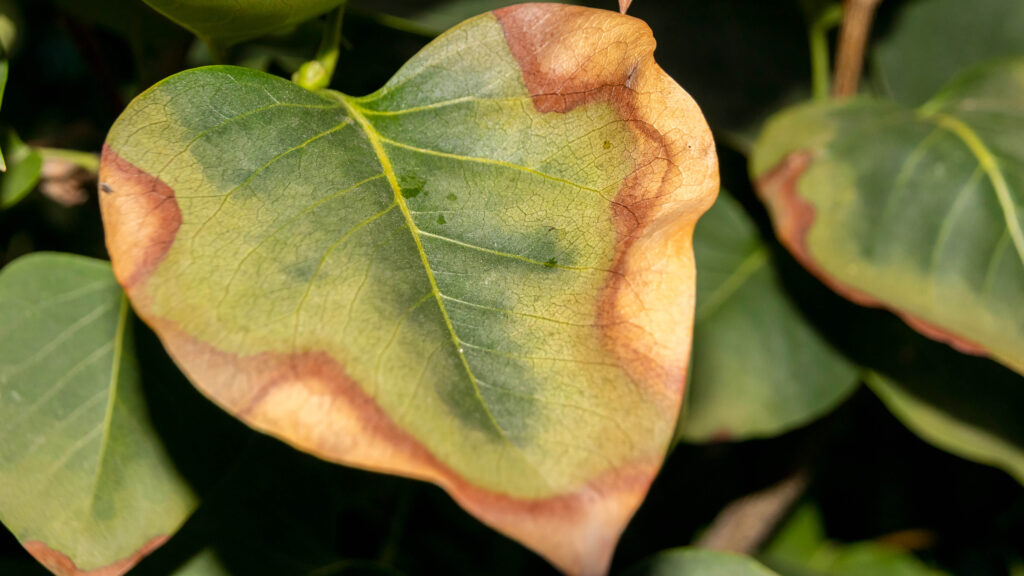Even our houseplants can get sunburned in the heat. And if you want your favorite plants to thrive this summer, these tips to protect plants from sunburn will come in handy. Plant sunburn or leaf scorch occurs when a plant is overexposed to direct sunlight.
This is especially the case if your plants are perched in a shaded windowsill or area. Deprived of hydration and nutrients, the leaves can easily get scorched by the Sun. It usually happens when the temperature hits 90 degrees F or more.
Typical signs of sunburn are light spots forming on the upper leaves, yellowing between leaf veins and along leaf margins, and a browning on the tips of leaves. Even ‘sun-loving’ plants or homegrown produce such as tomatoes in pots and peppers can get sunburned and stop producing. So before you resort to learning how to save a dying plant , these tips can protect plants from sunburn, and help them thrive in the summer.
Start by moving plants into a shady spot to prevent them from sunburn. You can move it back to the sunny location gradually, by increasing the sunlight exposure by one or two hours a day to get their nutrients. In addition, south-facing windows tend to have the highest light intensity, so you can try relocating plants to face north or east.
During fall and winter, you can then transition the plant back to its regular spot in the same manner. Even though your scorched plant may look like it needs more water, don’t give it more than it needs. Slowly water until you see it drip out of the drainage hole, then, until the soil dries out 2 or 3 inches deep before watering again.
You can test the soil with this XLUX Soil Moisture Meter ($10, Amazon (opens in new tab) ), to give you an idea of when the soil is dry. Sunburned leaves will usually fall off on their own, but the best option is to cut off any leaves that have more than 50% damage. Once the leaves are sun damaged, they will not repair or grow back, so you need to maintain its condition.
Give sunburned plants an undiluted, organic fertilizer, but cut the amount in half. So if you fertilize your houseplant every two weeks, change it to just once a month, but make sure they are well hydrated before feeding. This will allow the houseplant to develop more leaves in the meantime.
You can increase the fertilizer or frequency to keep up with your plant’s growth and needs. Keep an eye on yours plant every day, especially during summer months. If you spot any damage or signs of sunburn, relocate in the home or bring to a shaded spot inside the house, where it will only receive indirect light.
As long as you follow these care tips, the process can take about two weeks. Ensure you continue to water and feed scorched plants properly while they’re trying to recover. Then your beloved plants will thrive all year round.
If you’re new to the world of growing food, check out the 9 easiest vegetables to grow for beginners. Or learn how to grow tomatoes from seeds or how to plant asparagus the easy way for delicious meals. .
From: tomsguide
URL: https://www.tomsguide.com/how-to/5-tips-to-protect-plants-from-sunburn
